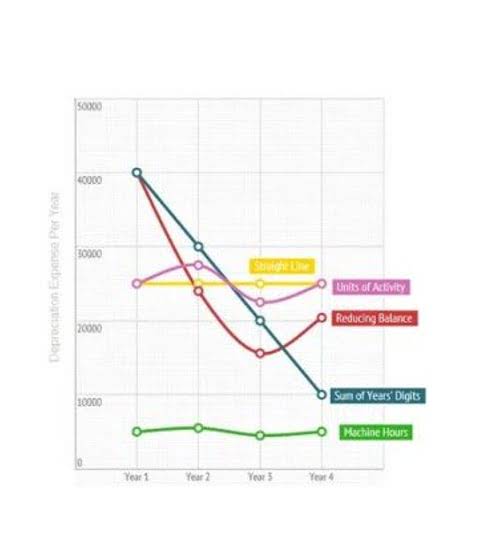But, if you change the oil every 6-9 months, the car engine may run 25 years. So, if the maintenance is cut out from the start, the results of this particular failure will take five years to notice. From 1 January 2024, workers can no longer accrue COVID carryover leave. Workers will still be able to use the leave they accrued prior to 1 January 2024 before or on 31 March 2024.
When strategizing, the level of fixed costs often impacts the risk profile of a business. A company with high fixed costs needs to ensure consistent sales volume to break even, making it riskier during economic downturns. On the other hand, a company with low fixed costs may not need high sales volumes to cover costs and could be more flexible and resilient to market variations. With these considerations the many benefits of a 401 in mind, businesses are advised to balance their financial capabilities with their environmental goals. Effectively managing fixed costs tied to eco-friendly initiatives is central to driving a sustainable business model, as it profits the company, society, and the environment over time. Another potential strategy for managing fixed costs is renegotiating contracts with suppliers.
Administrative costs
The cost of any repairs and maintenance that are necessary to preserve a fixed asset’s working condition can be capitalized and depreciated. If you have a high percentage of reactive maintenance (above 10%), you can turn this into an argument in your favour. That is, advocate a more preventive or even predictive approach with a strategy to reduce maintenance costs in the long term.
Hidden maintenance cost is a term to describe cost-inducing events that are either fully acceptable and/or are produced because people are unaware of them. The hidden maintenance costs are not always classified as maintenance costs; they can be classified elsewhere, but have a connection to maintenance. Change could be done fairly easily and could really help a cost-cutting effort in some plants. Company, local state/province and international tax laws differ and change over time, which adds another level of variability to the definition of maintenance cost.
- Let’s begin our deep dive into how fixed costs influence various aspects of business management.
- Maintenance expenses and capital expenditures are costs incurred to keep an asset running properly, but they have different meanings.
- An analytical person may think that the operations maintenance team may prioritize jobs incorrectly and that there is a cost-saving to be made by better analysis of the necessity of each job.
- Workers whose employment terminates on or before 31 March 2024 are able to claim any pay in lieu of any remaining entitlement they were unable to use due to the effects of coronavirus.
- Hence, whether a business increases or decreases its output, these costs remain static.
- The final payment to the repair shop cancels the previously recorded liability.
After that, you have to search through spreadsheets to find what is the cost for each used spare part. While a CMMS might allow you to break down costs based on types of invoices, types of spare parts, and type of performed work, the most useful reports will be those that look at specific assets. From the analysis made on this cost; an optimal figure of the amount of maintenance that should be performed in a company should be taken. Sometimes the maintenance budget is reduced, believing that it generates savings, but it is not seen in the long term all the problems that this decision entails. By taking these administrative costs into account, a company can better manage maintenance expenses and optimize its operations. This expense ensures the condition of the machines in the medium and long term.
The Impact of Fixed Costs on Budgeting
For example, staff working 6 days a week are only entitled to 28 days’ paid holiday. The government has introduced reforms to simplify holiday entitlement and holiday pay calculations in the Working Time Regulations. It is not intended to be relied upon in any specific context or as a substitute for seeking advice (legal or otherwise) on a specific circumstance, as each case may be different. If employers introduce changes to terms and conditions, they must seek to reach an agreement with their workers or their representatives.
Breakeven Analysis
An example of dedication to precision can be illustrated by a plant that had an alignment standard of 2 thousandths of an inch for 1800 rpm shafts. To enforce this standard, they had a sign-off form for accepting a sub-standard alignment. Just to mention one example, good planning can’t be done unless there is information and physical access and kitting of spare parts.
Fixed Costs in Different Industries
For instance, if your fixed costs are $10,000 a month, and the profit margin on each unit sold is $100, you know you need to sell 100 units a month to break even. When formulating a budget, businesses first consider their fixed costs. After all, these are the expenses that don’t change and must be paid, regardless of earnings or operational efficiency. Rent on premises, salaries, utilities, or equipment leases – these are all examples of such fixed obligations that need to be fulfilled.
Instead, Paul’s hours are fixed (just worked in a rotating shift pattern). Kevin would qualify as an irregular hours worker if his contract says that the hours he works will be wholly or mostly variable in each pay period. Kevin’s contract could be a ‘casual’ contract, otherwise known as a zero-hours contract. Failing to do maintenance the right way doesn’t simply mean it will take more labor, parts or contracts. It will also cause lower product quality, higher energy costs, reduced asset lifespan, extra maintenance, lost production hours, wasted resources, environmental issues and even safety issues.
Calculate Total Maintenance Cost
Consequently, automakers need to manufacture and sell a significant number of vehicles to cover these substantial fixed costs. Fixed costs, due to their nature, are often tied to long-term financial commitments such as long-term leases or loan repayments. Consequently, fixed costs can determine a business’s financial flexibility and therefore play a significant role in long-term planning. These salient characteristics underline the importance and uniqueness of fixed costs in a company’s financial structure. Recognizing these properties can be vital in accurate budgeting, pricing products, and performing a realistic break-even analysis. You might pay your office rent every month, over any specified lease period, and this expense does not vary based on the number or value of goods or services you produce or sell in that month.













